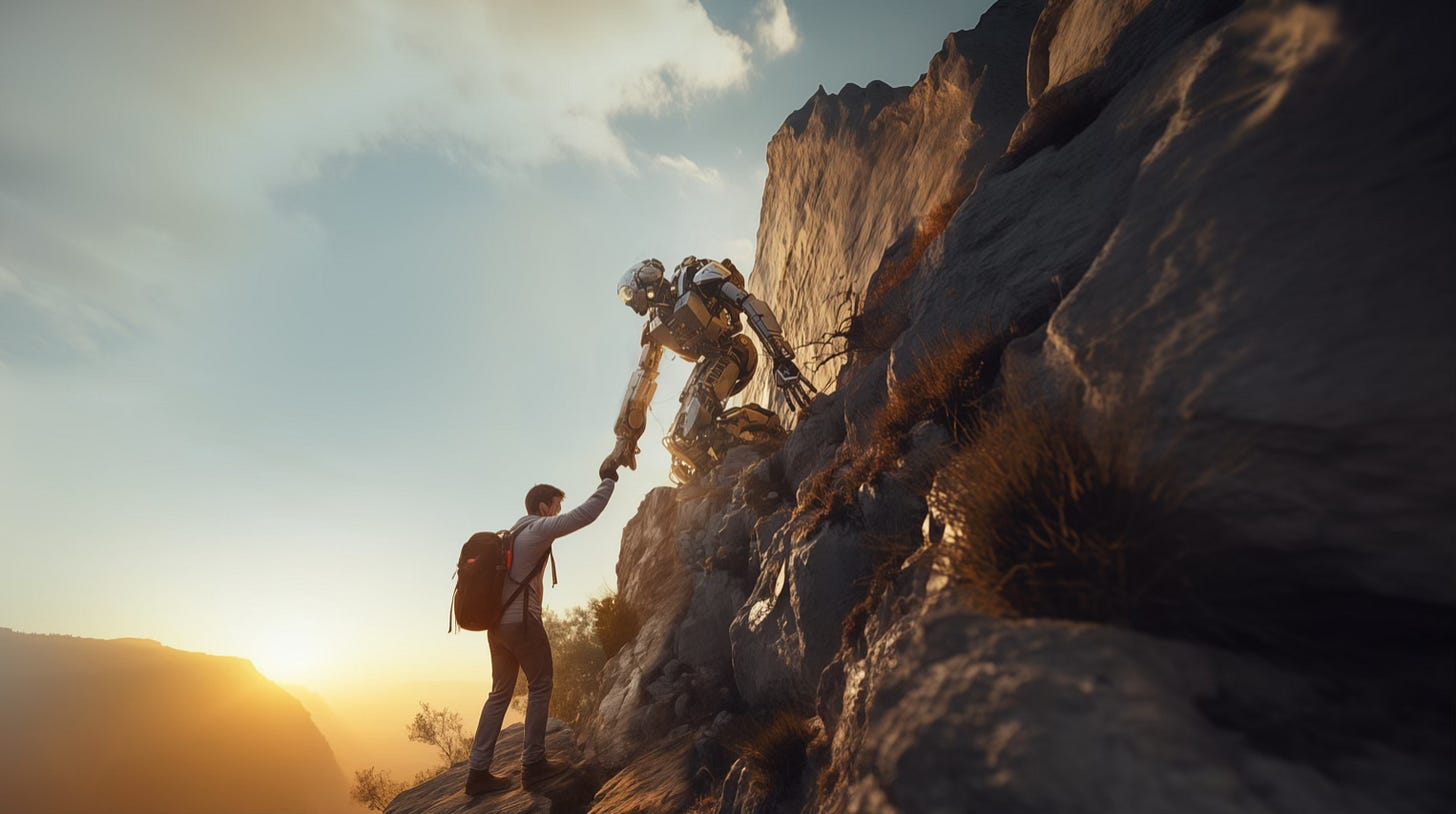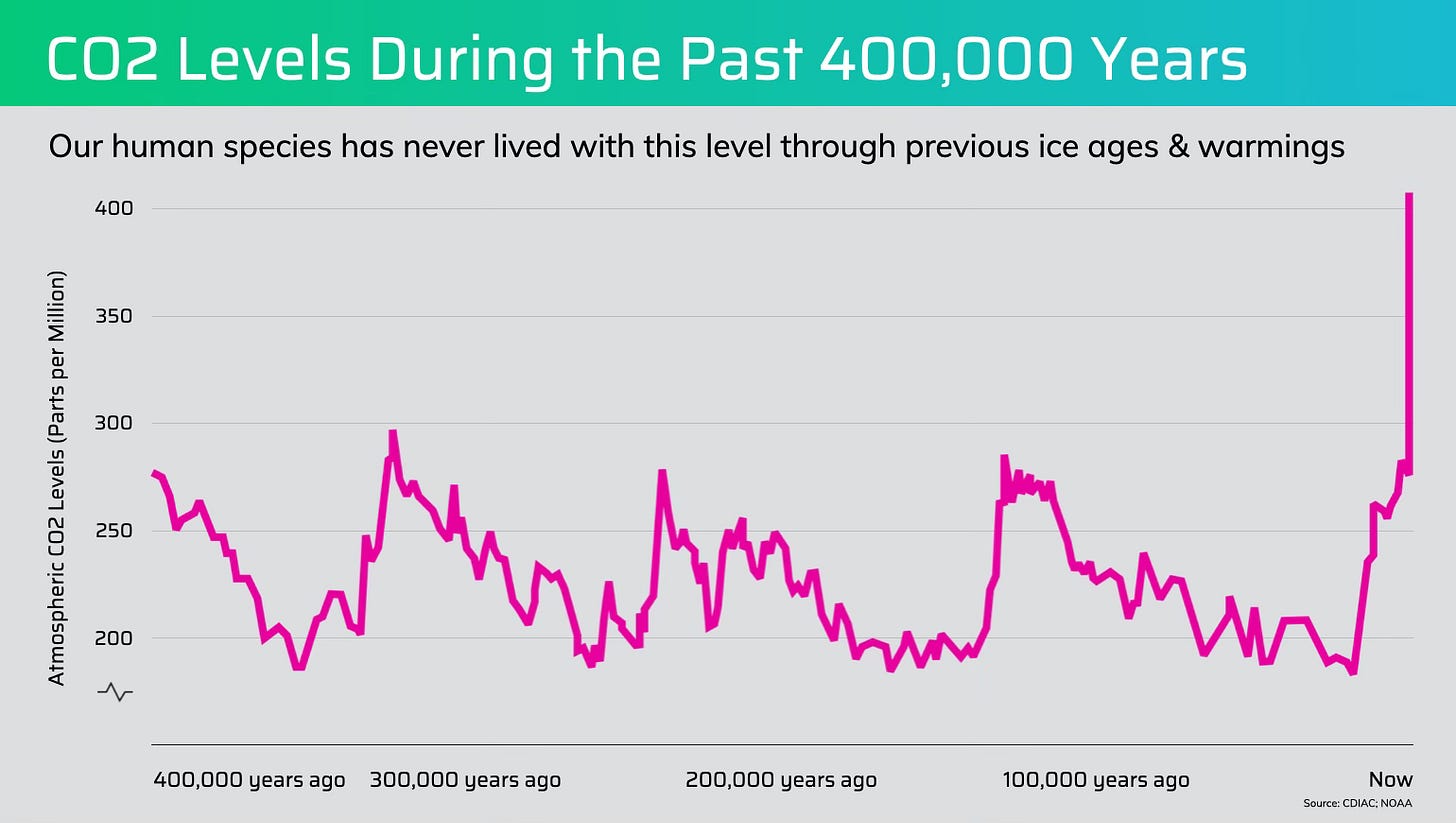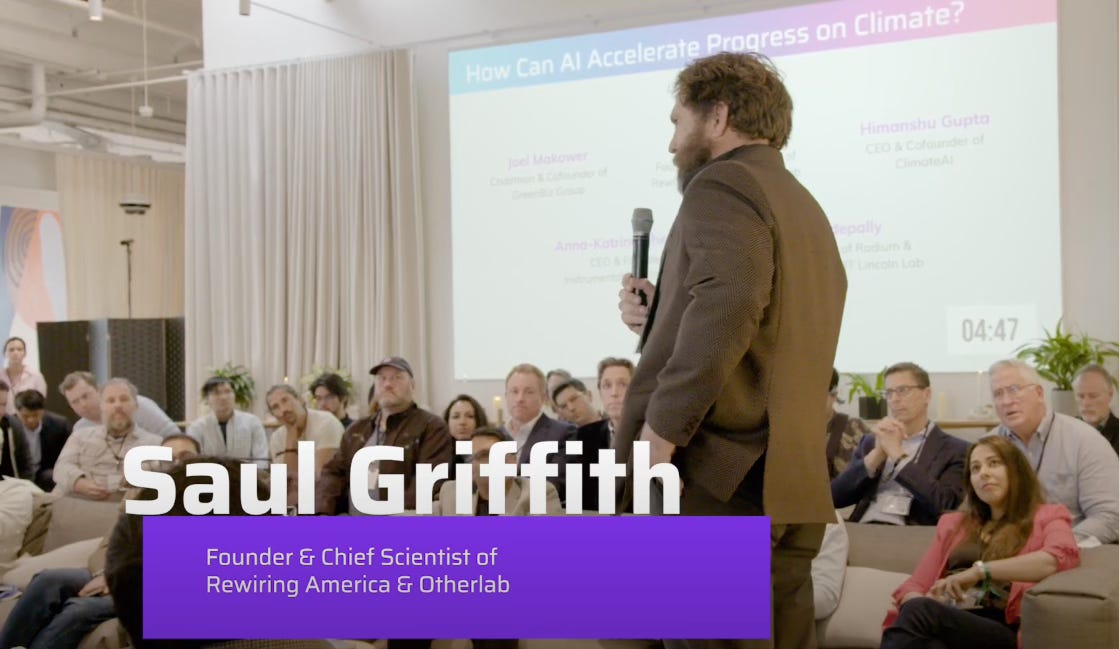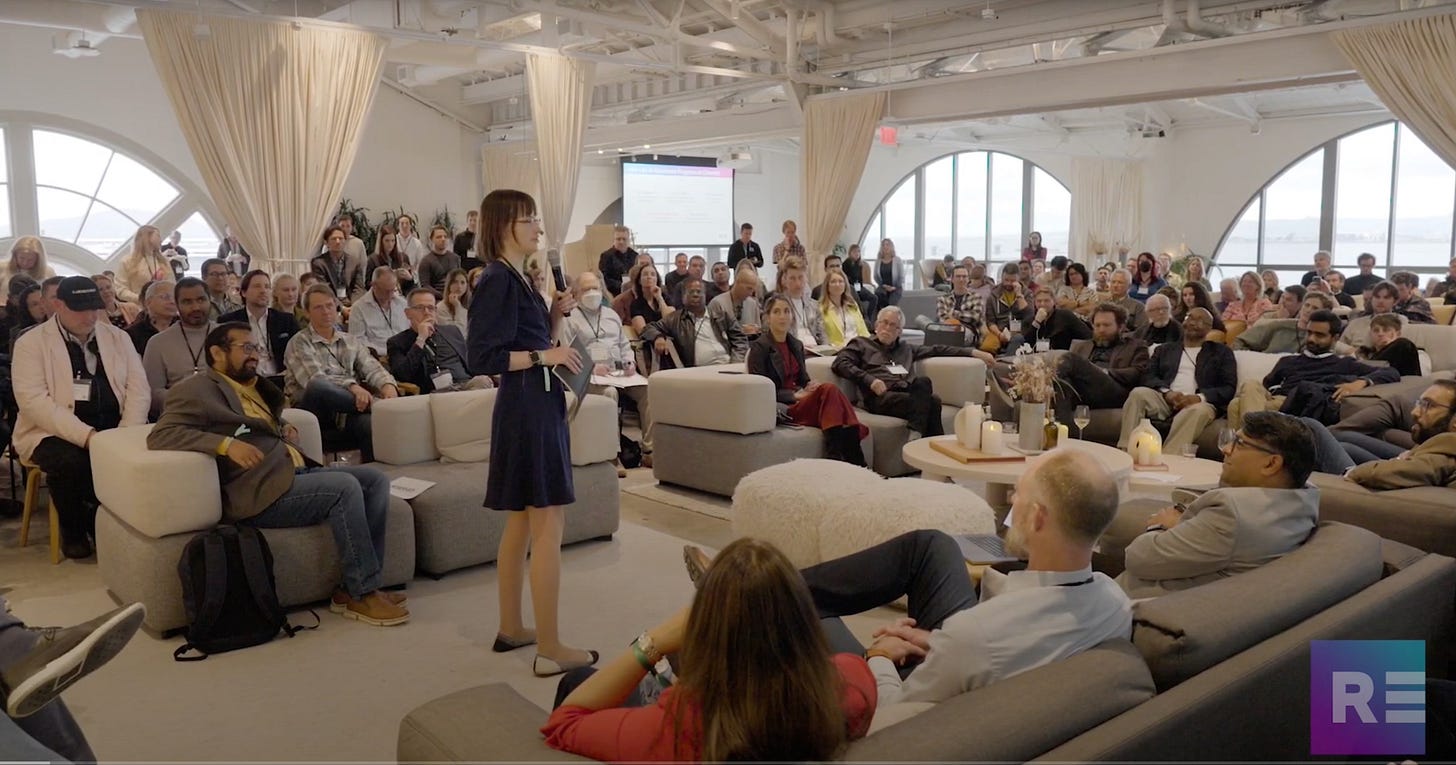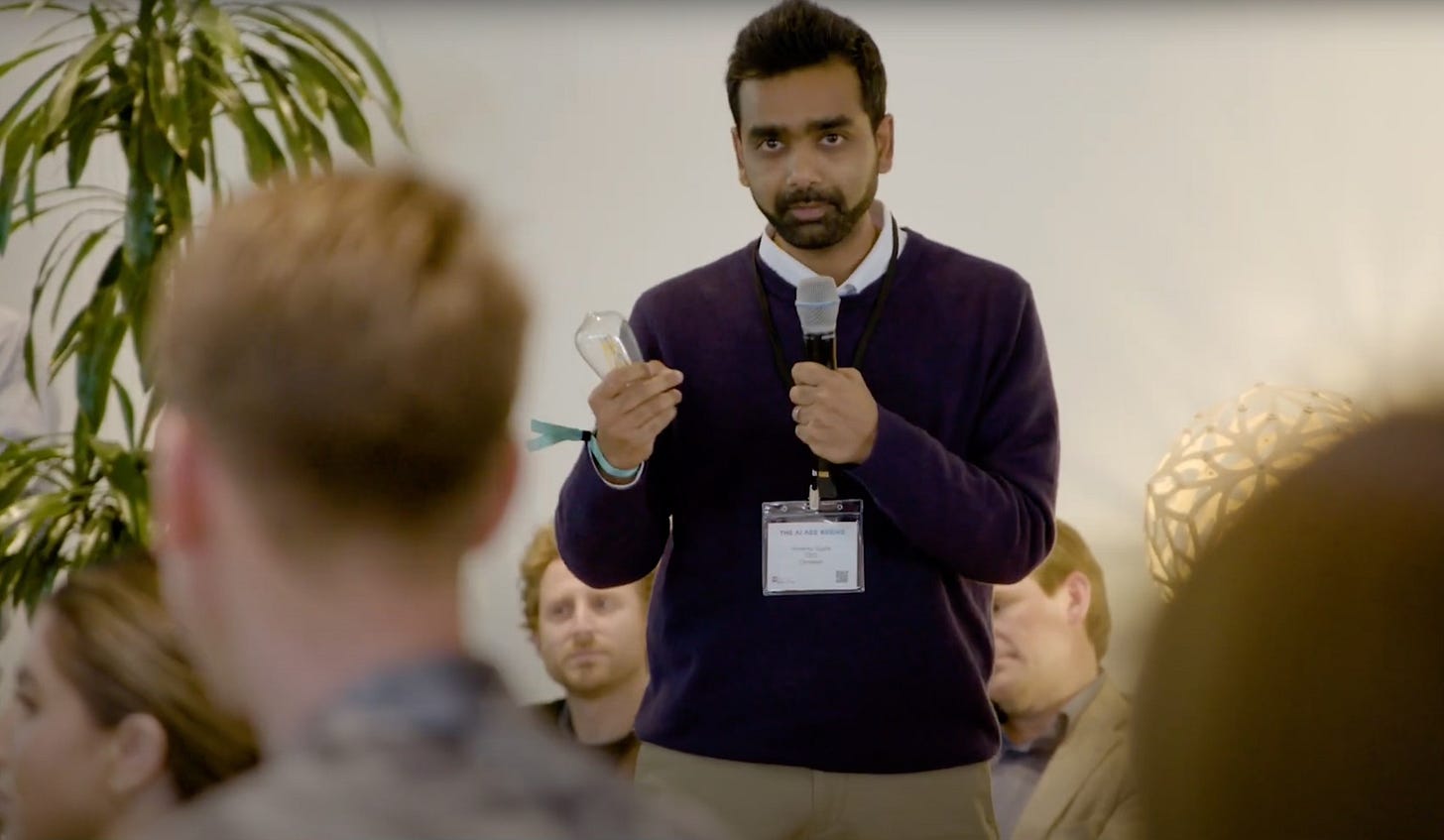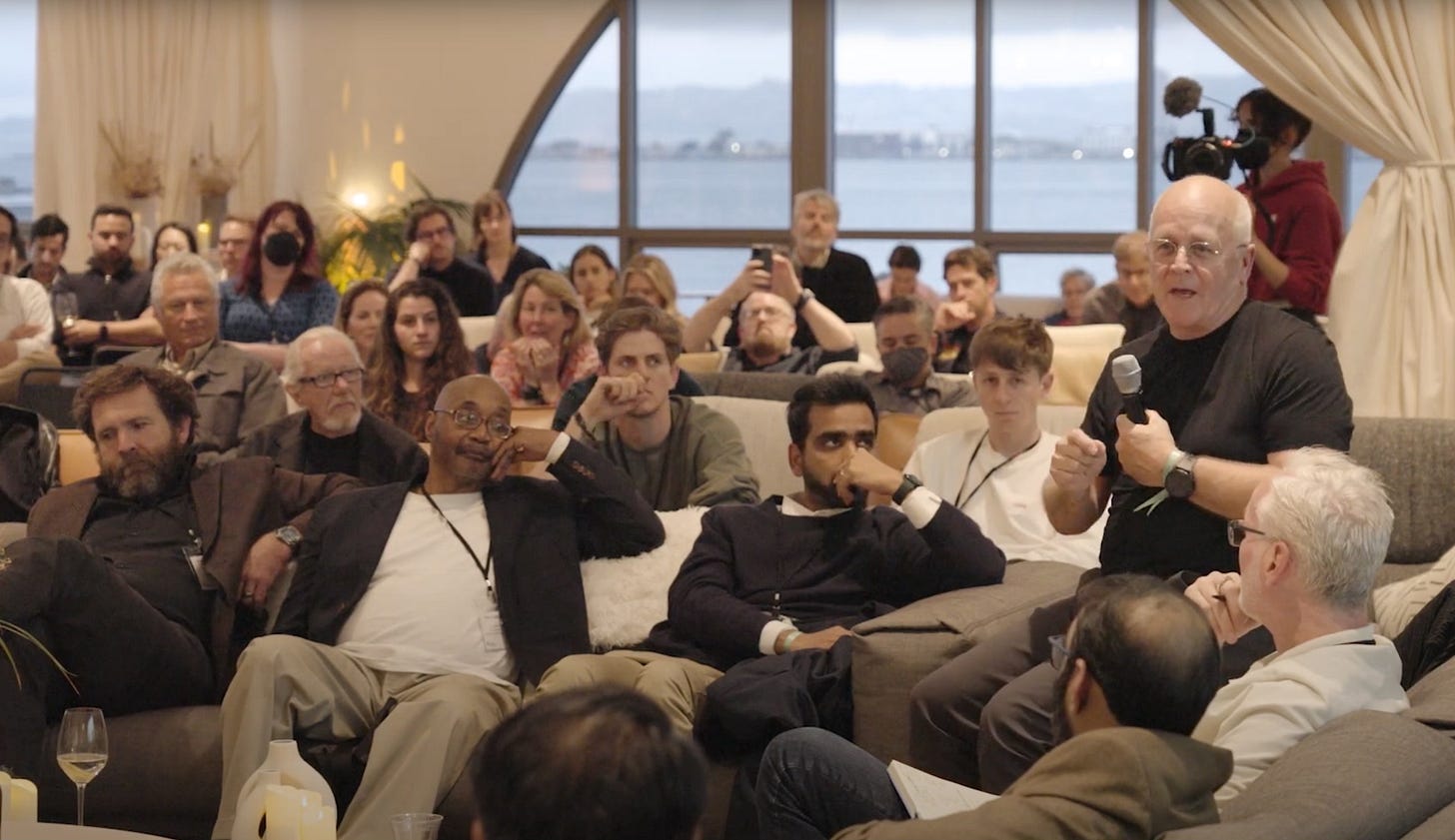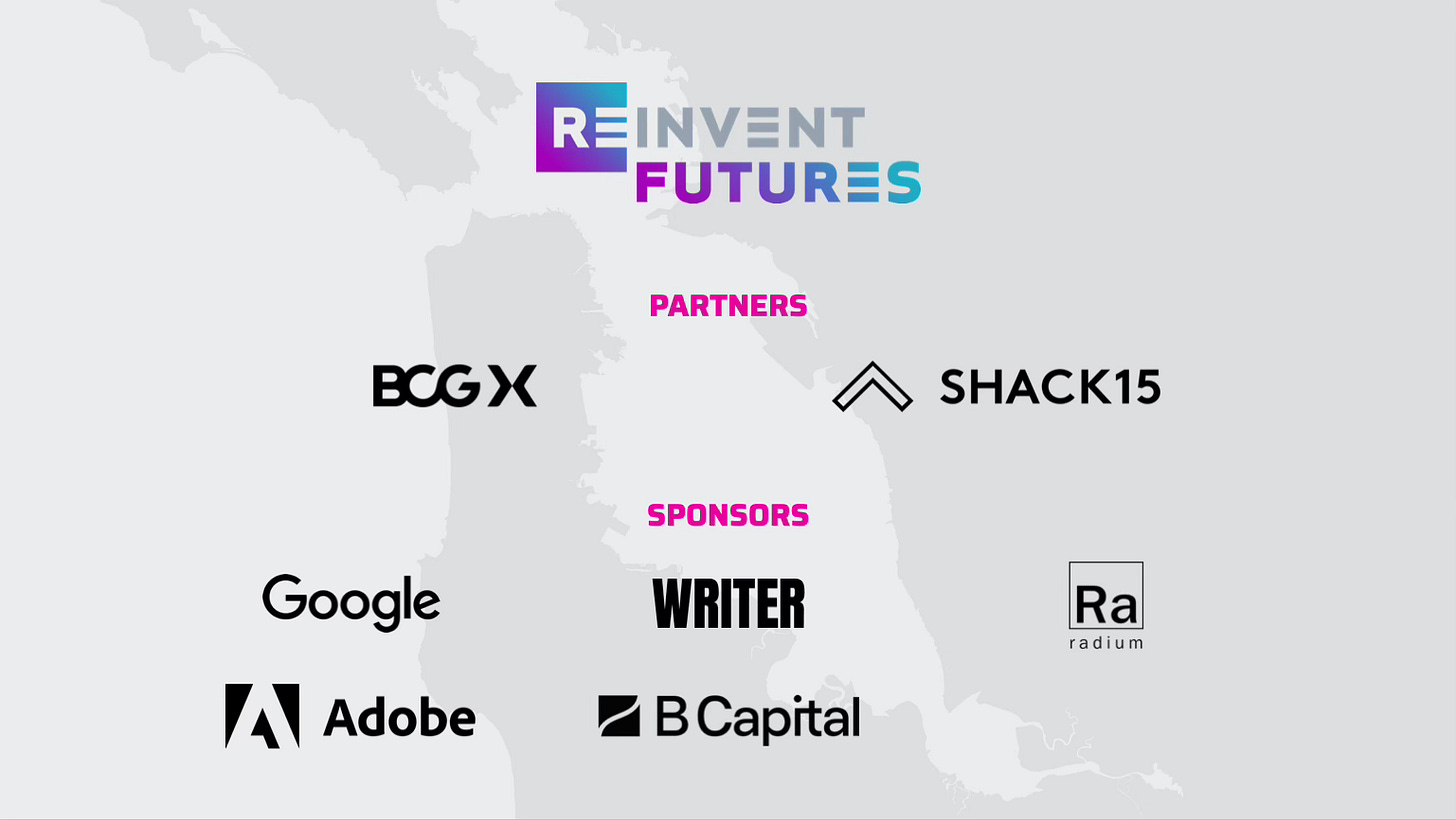How AI Could Supercharge Progress in Solving Climate Change
Humans are up against the wall facing the climate challenge but artificial intelligence may be the super tool we need to stop global warming in time
We humans are backed up against the proverbial cliff in the battle to stop global warming and fully address climate change. We don’t have much time left to make the changes needed in our many systems of energy and transportation and manufacturing and food production and the like before it’s too late.
Many of the climate experts best positioned to understand what it will take to scale up that cliff and get to a plateau of truly sustainable systems that will keep the temperature of the planet within acceptable bounds — are nearing despair.
Yet at that same moment of mounting despair, we humans also witnessed the arrival of artificial intelligence, a potential all-purpose super-tool that just might help us scramble up that cliff in the nick of time.
Sounds like something out of the script of a Hollywood movie, but what if that storyline is actually what plays out in the next 25 years? That would be something to figure out soon.
Many tech experts best positioned to understand the potential of AI see it as the next great general purpose technology that could be applied in almost all fields to accelerate innovation and quickly scale up new ways of doing things. The arrival of Generative AI just 18 months ago opened up high-level computing power and the world of big data to everyone and set off a big bang of entrepreneurial activity in myriad directions.
Generative AI was born out of the complexity of big data to deal with the complexity of the world. In other words, the new Gen AI models were trained on massive amounts of data that are far beyond what human minds can navigate or comprehend. And yet now that these models are up and running, they have the potential to help humans navigate the increasing complexity of our modern world. What better use could AI be put to than to deal with the most complex challenge that humans have ever faced in the form of climate change?
So last month in San Francisco we gathered about 250 experts and innovators who either understood the world of climate change or the world of artificial intelligence, and some who understood both. We brought together the up-and-coming young builders of GenAI at the Shack15 club at the top of the Ferry Building that acts as a key node of what is called Cerebral Valley, along with senior leaders of many leading companies in the global economy through our partners BCG X, the tech arm of Boston Consulting Group.
We called a meeting of the minds to answer a key question: How can AI accelerate progress in clean energies and climate tech? This essay is about what we learned over the course of the evening with a dozen thought leaders giving their answers in roughly 5-minute talks that can each be viewed in their entirety in YouTube. And then we continued on in a more open conversation with all those innovators, entrepreneurs and creatives who gathered in what became more like a party.
We hosted some world-class thought leaders like Saul Griffith (click for his video), a serial entrepreneur of 10 startup companies, many tied to dealing with some aspect of climate change. Griffith was instrumental in America’s so-called Inflation Reduction Act, which really was a $350 billion U.S. government stimulus to get the green economy moving towards scale. He wrote the influential book “Electrify” and co-founded the non-profit Rewiring America that helped draft the bill and now is helping drive the culture change throughout the United States.
“We're really up against it on time and I think the honest assessment is that the challenge now is about hardware deployment,” Griffith said, adding that the entire world needs to quickly transition to electric machines running on clean energies to replace all the legacy machines running on carbon energies. “We've got to finance 20 billion machines, we've got to build 20 billion machines, we've got to install all those machines.”
“I think there's plenty of opportunity for AI to help, but I want to start out with being pretty honest — this is what we have to do,” Griffith said. “And we've got to do it in 20 years to have any chance of saving any coral reef.”
This event is part of a series called The AI Age Begins which generally attracts people who are optimistic about new technologies and the future in a region that is known for that optimism. But Silicon Valley and the Bay Area are also known for practical business sense and those who gathered in our event were no different. They wanted to face the facts when it came to climate change.
The fact is that the climate challenge is daunting and verging on becoming overwhelming. But then the new-found capabilities of artificial intelligence are incredibly promising and have the potential to be truly transformative. Could AI be what we need to finally pull this off?
“I'm going to tell you right now, as humans, we alone are not going to get it done. We need tools that can see things that we can't,” said John Picard, a longtime veteran of Silicon Valley who has spent his career championing sustainable buildings and currently is working on an AI project at Google X that could dramatically drop the construction timeline for permitting and compliance from three years to three days.
“I'm excited about AI and I don't know a fraction of what you AI developers know, but I'll tell you, I wake up every morning, I go to bed every night, compressing my thinking, knowing that this is THE tool. I came here to tell you I'm going to spend the rest of my life working with this new tool with all of you.”
The clear-eyed reality check on what we are actually up against
We started our meeting with a reality check of the core facts that bear repeating here too. Human beings with our size brains and bodies have never lived in a world with carbon levels in the atmosphere where they are today. Our species homo sapiens appeared on the scene roughly 300,0000 years ago and we know from ice core samples and carbon dating that even through the ups and downs of ice ages we never got close to where we are now. (See the adjacent chart.)
Since the Industrial Revolution, we humans have been digging up and burning coal and subsequent versions of carbon energies that has released all that C02 into the air. The levels of the world’s collective global warming pollution has been charting up like a hockey stick.
However, for the last 40 years or so, the most advanced economies in America and the West have flattened and even begun to reverse their upward trajectory of carbon release despite continuing to grow their economies. We know how to make our economies much more efficient but also how to curtail the release of carbon into the atmosphere and still maintain an affluent style of life.
The developing world is the one that is primarily responsible now for driving up the release of carbon into the air because they are burning more dirty carbon energy the form of coal and have less efficient economies. But we humans know how to transition to a world where we reach peak carbon emissions and then drive them down and down.
We theoretically know how to do it, but to do it globally will take an incredible amount of work. Joel Makower has spent his career as a pioneer of all things related to sustainability and he has stared down the enormity of this challenge for decades. He is co-founder and currently chairman of the GreenBiz Group, which has created media and produced conferences and expos for the last 30 years in fields related to stopping global warming.
“If we talk about the big buckets needed to stop global warming: we're talking about energy, we're talking about transportation, the built environment and cities, we're talking about manufacturing and materials, we're talking about food systems, and we're talking about how do we protect and enhance ecosystems and biodiversity,” Makower said.
Each of those half dozen fields has ways that Generative AI available today could to applied to accelerate progress in decarbonization, and Joel speculated on some examples in each bucket that he could imagine Gen AI builders could help solve. (See his video for those details, and click on the names any of the experts on this piece for their full talk.) Part of the rationale of this Meeting of the Minds was to expose many of the young up-and-coming Gen AI builders who deeply understand the technology to climate experts who understand what needs to be done ASAP.
Saul cautioned that we need far more than just using AI to optimize the many systems bound up in the transition to sustainability. For example, we could and should use AI to optimize energy flows on the grid but that might shave off just 2 to 3 percent of American carbon emissions. But he said we also need to take some big swings like those who are already applying machine learning to figure out how to create and commercialize fusion energy, which could provide abundant clean energy, but may take 20 years to get to the market, if then.
“We need new materials everywhere,” Griffith said. “So whether that's low temperature or room temperature superconductors, building materials, et cetera. I'm actually pretty optimistic here, but whoever invents a solid state heat pump, that's a really important thing. So I'll throw that idea out.”
Both Griffith and Makower made sure to debunk any talk that AI or any technology alone would be the answer to the climate challenge. (There is a strain of Libertarian techno-optimism that tends to promote that kind of thinking.) Griffith stressed that he thought at this point the most important leverage points in this climate battle are all bound up with various aspects of government: politics, policy and regulation. We need those massive levers to redirect entire societies and economies to these new sustainability goals.
“We cannot techno-fix our way out of these challenges,” Makower said. “They're just simply too big, too complex, and we need changes in policy, in finance, personal behavior, political systems. I think we need to have between the AI community and the climate community, a much deeper, honest conversation about what's possible, what's imperative, and where we all need to go from here.”
AI and the electric grid and transport pieces of the puzzle
You can date the start of our climate change troubles back to the start of the Industrial Revolution and the digging up and burning of coal (as we did earlier in this essay).
The real problem, however, began a little more than 100 years ago at the beginning of the 20th century with the birth of two new industries: the electric utilities industry led by Thomas Edison and the automobile industry led by Henry Ford. Starting around 1912, these two industries start scaling in separate but parallel tracks in a boom that lasted through the entire century and was emulated around the planet too.
Unfortunately, the skyrocketing growth of those two industries also directly resulted in skyrocketing carbon emissions because both industries relied heavily on oil. And so today about 60 percent of all carbon emissions in the United States come from just those two industries, about 30 percent from transportation, and 30 percent from electric utilities.
“A magical moment is happening right now. The magical moment is that those two industries, those two systems are becoming the same system,” said Apoorv Bhargava, the CEO & Cofounder of WeaveGrid. “When you drive an electric car, you are inherently now part of an electric grid. By being part of an electric grid, you are also fueling an electric car. So magically these two systems have become one.”
WeaveGrid is a a company using AI to manage this transition to a cleaner, greener electricity and transportation system in the United States because we have a long way to go and we are woefully unprepared. For example, Bhargava said the United States would need to invest $1 trillion to build out the electric grid in such a way that all 280 million cars in this country could recharge any time they wanted, including at the same time. That’s not going to happen for a long while.
In the meantime, WeaveGrid adds an artificial intelligence layer to the system in order to optimize the flow of electricity between the grid and the electric cars. He said today they are able to double and triple the number of cars that an electric utility can put on their existing infrastructure. And that’s just a start.
“Today grid operators are humans. We need to augment them with artificial intelligence. We need the machine intelligence to actually augment the human intelligence so we can ensure that every car charges at exactly the right time with exactly the right energy and reduces the amount of infrastructure pain that we are incapable of building right now, because the build out of the electric grid would take a trillion dollars,” Bhargava said.
Then there’s the problem of how we build the millions of electric cars to replace the 280 million old internal combustion ones, and that’s just in America. The logistics of just building all those machines and the many more throughout the world is staggering. But there’s an even more fundamental problem - we need to find and mine all the metals needed for manufacturing the batteries and all the other technologies needed for solar panels and the like.
That’s where Jef Caers, Founder of Stanford Mineral-X at Doerr School of Sustainability, comes in. To illuminate the developments of today, he also went back in history to the year 1859, when Edwin Drake invented a new technology called the drive pipe and created the first commercial oil well. That big bang started a scramble for the next 150 years to find and then extract what became this precious commodity.
“We're actually in the same situation as Drake. We actually have to find Earth's resources. We are going to use and be using vast amounts of metals. Metals such as copper, nickel, cobalt, and lithium of course, and also rare-earth elements,” Caers said. “Most of the technology to build renewable energy is already known. Ninety-five percent of all the technology is here. What is not here is a technology to discover these metals in the time framework that we need them. And that's a big challenge. That was until last year.”
Caers works as a professor of Earth and Planetary Sciences at Stanford University within the new school formed by a huge gift from the legendary VC John Doerr called The Doerr School of Sustainability, but he also has been an advisor for a relatively new AI company called KoBold Metals. Last year the company discovered one of the largest copper deposits ever found in the world in Zambia.
The company used new techniques of machine learning and GenAI to narrow in on a possible deposit of this critical mineral in roughly one-tenth the time used by traditional methods, which can take a decade of exploration before extraction can begin. The new process took more like a year - with more projects in the works. That’s the kind of acceleration that we humans need to see a lot more of in the climate space.
“So if KoBold is indeed going to become a company that can do this a couple of times in the next five years, it will may well become a household name just like Exxon — without the CO2 emissions.”
The many buckets needing acceleration— like food & manufacturing
Let’s go back in history one more time for an analogy that illuminates our current moment. Back in the 1870s Thomas Edison and his co-inventors spent more than three years trying to create a commercially viable light bulb. They did thousands of experiments over those years to figure out the right filament material that would give 1200 hours of consistent light.
“If they had the tools that we entrepreneurs have now in machine learning and AI, it would've been a matter of days — if not minutes — to do so,” said Himanshu Gupta, the CEO & Cofounder of ClimateAI. Gupta has an unusual background that combines both technology expertise in AI with experience in climate policy and advocacy. Earlier in his career he helped the national goverment in his native India prepare for the Paris Climate Accords of 2015, and he did a stint working for Al Gore.
Gupta argued that AI is the ultimate “time multiplier” that can dramatically compress the time we take to innovate our way through the many, many micro challenges posed by climate change. His company is focused on how to transition food production throughout the world to deal with the many changes to the growing season coming from climate change.
ClimateAI is working with crop seed companies to develop climate resilient seeds for small-holder famers in India and Africa. These companies used to take three years to align the right seeds with the right location, taking into account the current climate.
“With our technology, it takes them basically a matter of minutes, and it's been deployed across 35% of the crop seed industry right now,” he said.
Moving from food production, what needs to be done to help transform the manufacturing sector in light of climate change? Manufacturing constitutes roughly half of the world’s GDP and contributes its share of global warming pollution. Reliable estimates put between 20 to 40 percent of the effort put into manufacturing processes ends up as waste.
“What if we wasted less downstream, then we could potentially use less energy, less mined materials for the same output. Guess what? That'd be cheaper too. So what's good for business is actually what's good for climate and energy in this case,” said Anna-Katrina Shedletsky, CEO and Founder of Instrumental, a company using AI in manufacturing.
Shedletsky knows something about manufacturing since she spent six years working as a System Product Design Engineer at Apple, including the lead on the first generation of Apple Watch. She found quite a bit of waste even in one of the premier global manufacturing companies that prides itself on lowering its impact on the environment.
She left Apple to found her company that leverages AI to optimize design and manufacturing processes to squeeze out as much waste and inefficiencies as possible. Too much of the progress in making manufacturing more sustainable has relied on individual initiative and even luck to get better.
“I think the combination of big data and AI in manufacturing can get rid of the luck and the heroism and we have a true opportunity to eliminate maybe all, but at least a good chunk— half maybe —of the 20 to 40% of inputs that are wasted in manufacturing.”
Bring the people along for this essential transition and don’t make things worse
We heard from people during the evening about the many ways that AI theoretically could be used for everything from optimizing current processes to leading to necessary breakthroughs. But with humans backed up against the cliff in the battle against climate change, we also need AI to help us scale the necessary changes as fast as possible. That means we need to get AI in the hands of as many people as possible and get them using this new tool now.
Are these tools being used in the climate battle? Are we about to see the impact in progress out there? Matt Kropp, the new CTO of BCG X, warned that we can’t take the impact or the adoption for granted.
“I will say we're now getting to the point where there's some question about whether we're actually getting impact,” he said. “I would argue the biggest challenge right now is really adoption. We have these great tools, but the humans have to use the tool. They have to want to use the tool. They have to know how to use the tool. They have to use the tool, and without doing that, we're not going to get any impact.”
BCG X did a survey last December among large enterprise companies in the Fortune 500 and at that point only 30 percent of them had software engineers using Github CoPilot, and of those users only half of them were using that Gen AI tool on a daily basis. Kropp said that this is a tech-savvy cohort that would be expected to be avid early adopters and yet weren’t.
Kropp speculated that some of the reluctance if not resistance may be because the employees perceive the AI as something that will replace their jobs rather than simply augment their work and make them more productive. He said executives and the managers should do a better job of showing how these tools can benefit all stakeholders and help phase out the tedious sides of jobs.
“I encourage you all to think about what is the human factor in using this technology?,” he said. ”It's too important for us. We have to act on climate. We have to move fast. AI is an opportunity to really help accelerate. That mission is too important to lose by not designing properly for human factors.”
And then there’s the obvious cautionary principle to not make things worse. All data centers in the world today use about 3 to 4 percent of global energy, which is more than the entire airline industry. Yet training AI models and then executing queries from millions of users takes a lot of energy and can be expected to need much more energy in the years ahead.
Vijay Gadepally, the CTO & Cofounder of Radium, an AI-focused cloud platform, encouraged those gathered and the whole AI community to proactively start to deal with this conundrum. Gadepally also is a Senior Scientist at MIT’s Lincoln Lab, which is a supercomputing center, and he knows all the amazing things that high performance computing can do. But he said that perhaps we need to start limiting the amount of computing power we use for less urgent or routine tasks.
Radium has used AI to run a lot of experiments that limit the amount of energy going to certain GPUs (Graphics Processing Unit chips) when certain calculations need less speed and accuracy. They also have played with the balance of accuracy to energy usage.
“What we were able to find in that simple experiment is if at times of high carbon intensity we were to use a lower quality model, and at times of low carbon intensity go full bore, we actually were able to reduce carbon emissions over a 48-hour period by about 70%, with an accuracy reduction of about 2%. So that's a tradeoff I think a lot of us would be okay with,” he said.
Google has long been a pioneer in the world of artificial intelligence and has pushed the boundaries of some of the most advanced AI models in the world. Yet the company committed long ago to ambitious sustainability goals. So can that balancing act be done?
“Google has a very ambitious goal of running, operating on carbon-free energy 24-by-7, every hour of the day for our data centers and facilities by 2030,” said Michael Marano, Technical Director in the Office of the CTO at Google. “That was kind of the scary goal when we set it, to be quite frank.”
“We now have some of our data: About 64% of our data centers are operating at carbon-free energy. We have 20 data centers that are operating at 85% carbon-free energy or more every hour of the day, and seven that are operating over 90% carbon-free energy.”
Getting back to the big picture possibilities as The AI Age Begins
These data centers are going to be the cathedrals of our time going forward. Leave it to the Silicon Valley veteran John Picard, the last speaker of the night, to bring the conversation back to the big picture and the long-term. He pointed out that humans in previous ages concentrated all their know-how and huge amounts of resources into creating these magnificent monuments that symbolized their times. He speculated something similar may well happen with us.
The AI Age is just beginning. We’re in the very, very early days. Yet we now understand that the current approach to developing artificial intelligence is working, and the pathway ahead is getting clearer. The opportunity space before us is already massive with much room to fill out in the years just ahead. Even if Artificial General Intelligence, or machine intelligence comparable to the versatility of human intelligence, is not within reach, or possibly can’t be achieved, we humans now have a super tool that will be critical to what we do going forward.
We are going to need massive amounts of computer power and the capacity to house mind-boggling amounts of data in the years ahead. The demand will be there from pretty much all industries in economy and all sectors of society. The need will be there to keep pushing the boundaries of what’s possible to solve our many challenges like climate change. Data centers will become so important that we will concentrate our know-how and resources to create what will become the monuments to our age.
“The data centers are the cathedrals for the cities. You're going to see a data center plopped down in the middle of an airport,” he said. “You want to know why? Because they're mission critical. And you guys will pay anything to get them done and get them done right.”
These burgeoning data centers will also continue to require enormous amounts of energy as well. So Picard speculated that the people building the data centers will also drive innovation into new ways to provide clean, abundant, cheap energy.
“Remember all the products that spun off of going to the moon? Data centers are going to spin off energy products like rotational energy, geothermal, the likes of which we haven't seen, new inverter technology that can harmonize any type of power,” he said. “So yeah, the data centers for the moment, it's a shit show…But those data centers are going to be the thing that drives the change.”
Picard’s most important contribution of the evening, however, was to bring our whole cerebral conversation to an emotional close with a reflection on our climate challenge. He told the story of how he had built his dream house in Hawaii for eventual retirement, and how he and his son were out there surfing last summer when the Lahaina fire hit.
“I've seen disaster, but nature's weaponizing and there is nothing natural about what happened that day last August,” Picard said. “I lost friends, surf buddies and family, and I saved my neighbor's three-year-old, and I panicked and left everything in our house. This was my retirement dream and it burned— it's gone.”
“You cannot believe the force of the winds and the fire. Everything burned, engine blocks melted and it created this silver mercury stream that ran down the road,” he continued. “This is it you guys. This is it. We're in the Anthropocene. Living systems are in decline. The pumping cycle of the Atlantic Ocean is slowing down. There is no reversing that.”
“We have to go beyond human right now. AI's just the first of many, many tools. AI's going to reinvent the refrigeration cycle. It could reinvent cement, it could reinvent steel. It could reinvent how we engineer.”
“The things that AI can do are beyond our imagination,” he finished. “All you kids who are starting your startups and doing your thing—push hard. Go, be the discoverers, be the explorers that you dream to be.”
Picard then finished, and the program finished, and as we transitioned to the party, Picard was mobbed.



